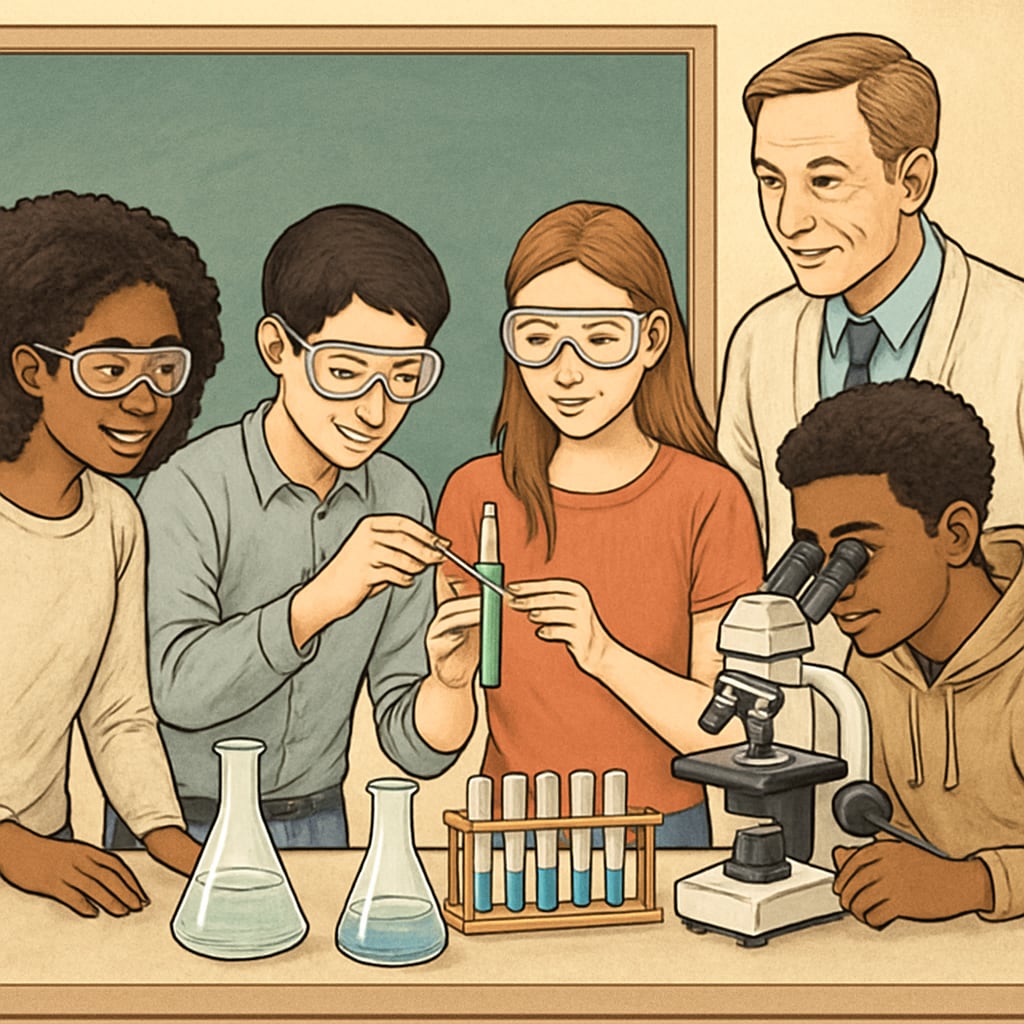High school science classrooms often host a diverse group of students, including English language learners (ELLs) with varying levels of proficiency. Supporting ELLs effectively requires a combination of inclusive teaching strategies, resources, and differentiated instruction. This article highlights practical approaches to bridge the gap between language acquisition and science learning, ensuring that all students succeed academically.

Creating an Inclusive Environment for ELLs
An inclusive classroom environment is essential for ELLs to thrive in high school science. Teachers can foster this environment by incorporating cultural responsiveness and prioritizing clear communication. For example, acknowledging and integrating students’ cultural backgrounds into lesson plans can enhance engagement and relevance. Additionally, simplifying instructions and reducing complex jargon allows ELLs to focus on understanding scientific concepts.
Key tips for inclusivity include:
- Using bilingual resources or glossaries to clarify technical terms.
- Encouraging collaborative group work that pairs ELLs with more proficient English speakers.
- Providing sentence stems or scaffolding to support language production.
Integrating Visuals and Hands-On Activities
Science, as a subject, offers unique opportunities to use visuals and hands-on activities to support learning. Incorporating diagrams, charts, and videos can bridge language barriers and make abstract concepts more tangible. For instance, a labeled diagram of the human body can help ELLs understand anatomy without relying heavily on written text.
Hands-on activities, such as experiments or model building, allow students to engage with content actively. These activities not only reinforce scientific concepts but also provide a shared, interactive experience that reduces language-related stress.

Leveraging Technology to Support ELLs
Technology is a powerful tool for supporting ELLs in science education. Numerous apps, platforms, and tools are designed to enhance language acquisition and content understanding. For example, interactive simulations like those on PhET Interactive Simulations make science concepts accessible through visual and interactive means. Similarly, platforms like Khan Academy offer bilingual content and subtitles, allowing ELLs to learn at their own pace.
Some effective uses of technology include:
- Utilizing translation tools for quick vocabulary support.
- Incorporating educational games to make learning engaging.
- Assigning multimedia projects to encourage creativity and collaboration.
Differentiated Instruction in the Science Classroom
Differentiated instruction is critical when teaching ELLs, especially in a subject as complex as science. It involves tailoring lessons to meet the diverse needs of students. Teachers can differentiate content, process, or product based on students’ language proficiency and learning styles. For example, while advanced ELLs may write a full lab report, beginners might complete a simplified worksheet with key vocabulary and sentence frames.
Strategies for differentiation include:
- Providing multiple levels of reading materials on the same topic.
- Using tiered assignments where complexity varies by student ability.
- Offering flexible assessment options to measure understanding.
By implementing these strategies, teachers can ensure that every student, regardless of language ability, can access and excel in science education.
Building Confidence and Motivation
Finally, fostering confidence and motivation among ELLs is vital for their success. Teachers can achieve this by celebrating small achievements, providing frequent feedback, and maintaining high expectations. Positive reinforcement helps students feel valued and capable, even as they navigate the challenges of language learning.
In addition, creating opportunities for ELLs to showcase their skills—such as presenting a project or leading a group discussion—can boost their confidence and encourage active participation. As a result, ELLs are more likely to engage with the material and persist in their academic journey.
In conclusion, supporting ELLs in high school science classrooms requires intentionality and adaptability. By creating an inclusive environment, utilizing visuals and hands-on activities, leveraging technology, and differentiating instruction, teachers can help ELLs overcome language barriers and achieve academic success.
Readability guidance: The article uses short paragraphs, lists to summarize key points, and a variety of transition words (e.g., for example, as a result, however) to improve flow. Passive voice and long sentences are minimized, ensuring clarity and accessibility.


